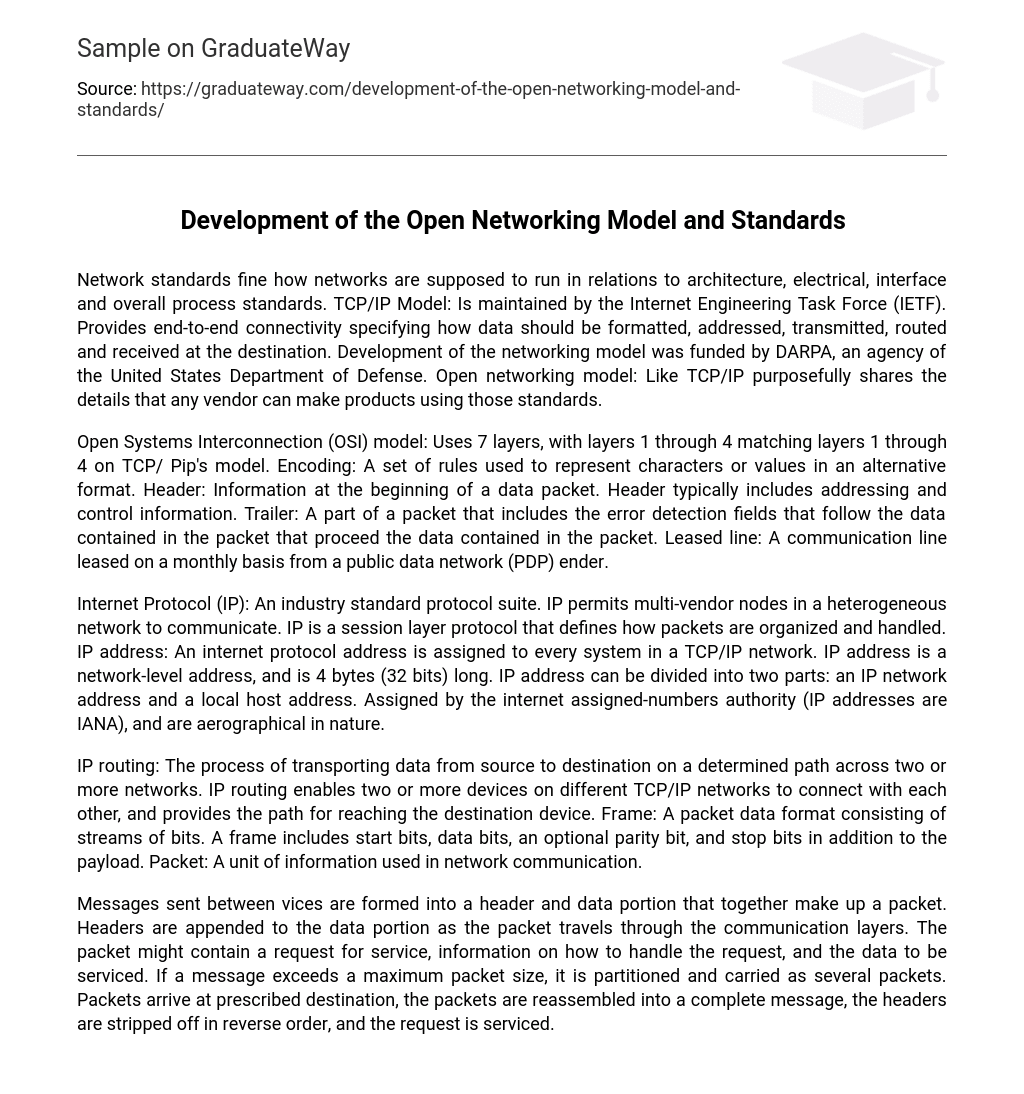Network standards fine how networks are supposed to run in relations to architecture, electrical, interface and overall process standards. TCP/IP Model: Is maintained by the Internet Engineering Task Force (IETF). Provides end-to-end connectivity specifying how data should be formatted, addressed, transmitted, routed and received at the destination. Development of the networking model was funded by DARPA, an agency of the United States Department of Defense. Open networking model: Like TCP/IP purposefully shares the details that any vendor can make products using those standards.
Open Systems Interconnection (OSI) model: Uses 7 layers, with layers 1 through 4 matching layers 1 through 4 on TCP/ Pip’s model. Encoding: A set of rules used to represent characters or values in an alternative format. Header: Information at the beginning of a data packet. Header typically includes addressing and control information. Trailer: A part of a packet that includes the error detection fields that follow the data contained in the packet that proceed the data contained in the packet. Leased line: A communication line leased on a monthly basis from a public data network (PDP) ender.
Internet Protocol (IP): An industry standard protocol suite. IP permits multi-vendor nodes in a heterogeneous network to communicate. IP is a session layer protocol that defines how packets are organized and handled. IP address: An internet protocol address is assigned to every system in a TCP/IP network. IP address is a network-level address, and is 4 bytes (32 bits) long. IP address can be divided into two parts: an IP network address and a local host address. Assigned by the internet assigned-numbers authority (IP addresses are IANA), and are aerographical in nature.
IP routing: The process of transporting data from source to destination on a determined path across two or more networks. IP routing enables two or more devices on different TCP/IP networks to connect with each other, and provides the path for reaching the destination device. Frame: A packet data format consisting of streams of bits. A frame includes start bits, data bits, an optional parity bit, and stop bits in addition to the payload. Packet: A unit of information used in network communication.
Messages sent between vices are formed into a header and data portion that together make up a packet. Headers are appended to the data portion as the packet travels through the communication layers. The packet might contain a request for service, information on how to handle the request, and the data to be serviced. If a message exceeds a maximum packet size, it is partitioned and carried as several packets. Packets arrive at prescribed destination, the packets are reassembled into a complete message, the headers are stripped off in reverse order, and the request is serviced.





